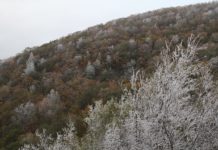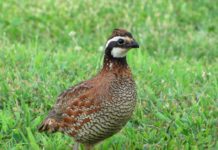Food plots for whitetail deer have become common across the nation, with many hunt clubs and individual conservation-minded sportsmen devoting hours of time and investing precious dollars to enrich the habitat of their favorite hunting species. Although providing habitat for ducks and geese is not as well known, conservationists can be equally aggressive for the benefit of waterfowl. These can take the form of small projects such as ponds, the preservation of wetland habitats, or the flooding of low-lying areas to attract and rear waterfowl broods. Derrek Sigler writes about supporting groups like Ducks Unlimited and the financial resources available to those who will take the initiative to build waterfowl habitat — food plots for feathers, if you will — in this Outdoor Hub post.
Waterfowler John Westenbarger, of Gaylord, Michigan wanted to improve waterfowl habitat on his property, so he researched and found grant money to help defray the costs by working with government agencies.
“There wasn’t any hassle over permits or anything, unless you are near a stream or river,” Westenbarger said. “If there is a watershed around, then it has to be permitted. Mine are in fallow fields, so no problem. I flood them via a well, they are better if the soil is clay.”
Westenbarger worked with his local representatives from the U.S. Fish and Wildlife Service office through their Partners for Fish and Wildlife Program. The program provides funding and assistance for wildlife habitat projects. He also found support and additional funding from his local Soil Conservation office.
“They will put up funding for food plots and habitat too,” he said. “I showed them that you could make a waterfowl food plot and they liked it. They are now putting up some additional funding for expansion of the original project.”









![The Best Deer Camp Chili [VIDEO] Deer Chili Ingredients, Tomatoes, Chili Spices](/wp-content/uploads/2015/10/Deer-Chili-Deer-Camp-Recipe-218x150.jpg)








![How to Call Elk Early in the Season [VIDEO]](/wp-content/uploads/2016/08/byers003-218x150.jpg)

![NCGM3[1]](/wp-content/uploads/2013/06/NCGM31.jpg)
![ducks-on-river[1]](http://www.griffinsgui.de/content/wp-content/uploads/2013/06/ducks-on-river1-300x225.jpg)





![Idiots Disturb Hunter: How Would You Have Handled It? [VIDEO]](/wp-content/uploads/2015/10/DSC00110-e1474487693878-100x70.jpg)
![Albino Buck Shocked to Shed His Antlers [VIDEO]](/wp-content/uploads/2015/10/AlbinoDeer-100x70.jpg)